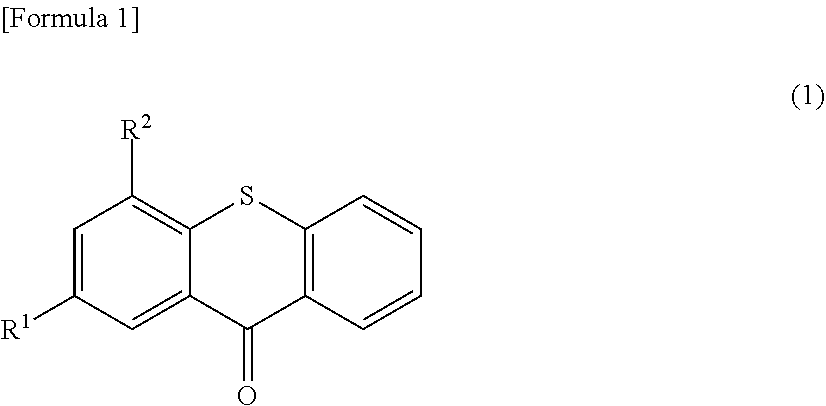Polarized film, optical film, and image display device
a technology of optical film and polarized film, applied in the field of polarized film, can solve the problems of inability to achieve good tackiness, undesired optical properties (polarization properties), degradation of durability against heating or humidification, etc., and achieves the effects of resisting changes in water resistance, and reducing the risk of polarization
- Summary
- Abstract
- Description
- Claims
- Application Information
AI Technical Summary
Benefits of technology
Problems solved by technology
Method used
Image
Examples
example 1
[0226]
[0227]A 0.5-μm-thick urethane-based adhesion-facilitating layer was formed on the acrylic resin film. Using an MCD coater (manufactured by FUJI KIKAI KOGYO Co., Ltd; cell shape, honeycomb; the number of gravure roll lines, 1000 / inch; rotational speed, 140% relative to line speed), the active energy ray-curable adhesive composition was then applied to the adhesion-facilitating layer so that a 0.5-μm-thick adhesive layer could be formed. Using a roller machine, two pieces of the acrylic resin film were bonded as transparent protective films 1 and 2 to both sides of the polarizer with the adhesive composition interposed between the polarizer and the acrylic resin film. The resulting laminate was then heated to 50° C. from both the bonded acrylic resin film sides using an IR heater, and the ultraviolet rays were applied to both sides to cure the active energy ray-curable adhesive composition. The laminate was further hot air-dried at 70° C. for 3 minutes to give a polarizing film ...
examples 2 and 3
[0228]Polarizing films were obtained as in Example 1, except that the transparent protective film type was changed as shown in Table 2. When the transparent protective film was a cyclic olefin polymer resin film, a corona treatment was performed instead of forming the adhesion-facilitating layer on the acrylic resin film.
example 4
[0229]A polarizing film was obtained as in Example 1, except that before the application step, both sides of the polarizer were subjected to a dry treatment (corona treatment) at a corona discharge power of 80 W·min / m2.
PUM
| Property | Measurement | Unit |
|---|---|---|
| Tg | aaaaa | aaaaa |
| glass transition temperature Tg | aaaaa | aaaaa |
| wavelength light transmittance | aaaaa | aaaaa |
Abstract
Description
Claims
Application Information
 Login to View More
Login to View More - R&D
- Intellectual Property
- Life Sciences
- Materials
- Tech Scout
- Unparalleled Data Quality
- Higher Quality Content
- 60% Fewer Hallucinations
Browse by: Latest US Patents, China's latest patents, Technical Efficacy Thesaurus, Application Domain, Technology Topic, Popular Technical Reports.
© 2025 PatSnap. All rights reserved.Legal|Privacy policy|Modern Slavery Act Transparency Statement|Sitemap|About US| Contact US: help@patsnap.com



